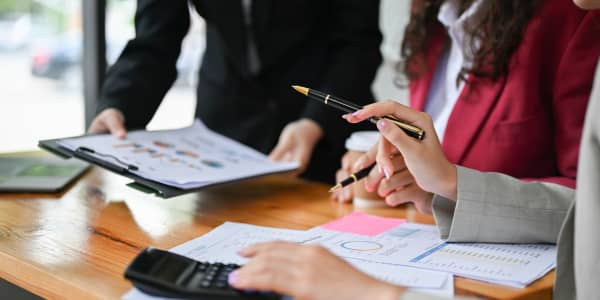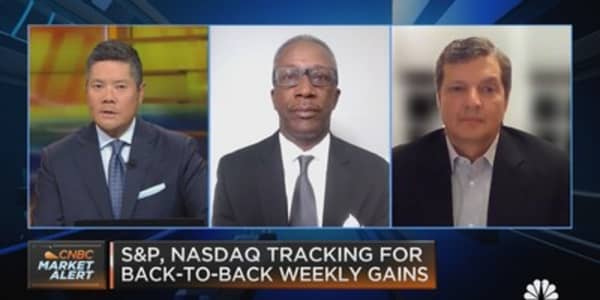As interest grows in alternative investments, it's likewise growing in tangible assets, such as rare coins and stamps.
But does one need to be a collector in order to invest in these assets?
Investing vs. collecting
"This is a huge issue in the rare-coin community," said Timothy O'Fallon, senior numismatist with Gibraltar Coins. "In my opinion, we're at the genesis of a new way of looking at rare coins—from an investment perspective instead of a collecting perspective."
Interest in rare coins has grown markedly in the past five years and will escalate over the next five to 10 years, he said.
Read MoreRare stamps: Postage can pay
"A lot of people have invested in gold and silver bullion, which has introduced them to coins," O'Fallon said.
"And now many are looking for an opportunity to diversify into alternative investments," he said. "If a tiny percentage of these investors move to this category, it will drive demand and value up significantly."
Furthermore, rare coins are a mature market with verifiable third-party grading and certification, he added. The PCGS3000 index tracks the value of rare coins.
O'Fallon defines rare coins as those far fewer than demand, pre-1933, with only a few hundred available.
Read MoreDrunk on liquid alternatives?
He lists the main investment categories as:
- Rare certified U.S. coins, especially gold coins, distinct from bullion. While a 1-ounce gold American Eagle is not rare, an 1846 $2.50 gold piece, with fewer than 150 in the world, is worth thousands.
- Certified ancient coins. "The interest is growing phenomenally because Numismatic Guaranty' NGC Ancients grading system has opened the door for collections," O'Fallon said.
- "Key date" U.S. coins—the rarest coins from a series. Investors look for these to complete a set.
To contact a seasoned numismatist, O'Fallon advises consulting the prestigious Professional Numismatists Guild.
Questions to ask include: How long have you been in business? Do you work with people like me? Do you have a minimum?
The numismatist will work with the investor in the following ways:
- Reviewing the client's goals, determining their time frame—five to 10 years should be the minimum time for holding the asset—along with the amount of the investment and its function within the portfolio.
- Choosing the specific coins by examining market trends, coin categories and specific coins. "This part is enormously fun," O'Fallon said.
- Staying in touch with the client regarding asset values.
- Helping with liquidation—the client can sell the asset back to the numismatist, go through a network of dealers or through the major numismatic auctions.
Record-breaking stamp values
"Owning something that is financially valuable, emotionally pleasing and culturally significant has been practiced by the wealthy for generations," said Keith Heddle, managing director with Stanley Gibbons, a renowned U.K.-based rare-stamp auction house and investment advisory firm.
"And the recent world records in auction houses across the world show that this trend isn't abating; indeed, it's escalating."
Read MoreAlternatives add diversity, cut risk
The world record price for a stamp at auction was broken in June of last year with the sale of the British Guiana 1-cent Black on magenta for $9.48 million, he said.
"There is also an incredible buzz in the Chinese rare-stamp market at the moment," Heddle said. A Stanley study, tracking the prices of 200 rare investment-grade Chinese stamps, shows a compound annual growth rate of 11.6 percent over 23 years.
Only invest in areas where there are a healthy number of collectors, as collectors drive prices.Keith Heddlemanaging director with Stanley Gibbons
Stanley Gibbons rare-stamp indices—the GB30 and GB250—have shown 10-year compound annual growth rates of 9.06 percent and 11.78 percent, respectively.
Is there a standard definition of "rare"? "It is not just about rarity," Heddle said.
Read MoreYou don't 'need' alternatives
He offered five key considerations when investing in stamps:
- Rarity: "Only invest where there is a small number of surviving examples or where they are unique."
- Condition: "Only invest in the best-quality examples. Many factors influence the condition of a stamp, from the margins around it, to the gum on the back, to freshness of color."
- Authenticity: "Ensure authenticity can be proved—a certificate is only as good as the person or body issuing it. Seek items with documented history and provenance."
- Liquidity: "Only invest in areas where there are a healthy number of collectors, as collectors drive prices."
- Price: "The classic value-investment principle—seek to buy at below fair value."
He recommends a minimum investment of about $15,000 to build a balanced portfolio, with a minimum holding period of five years, but ideally 10 years or more.
"The key risk for investors is that they try to go it alone. As with any market where there is money to be made, you will find fakes; only buy through reputable dealers and auction houses, and aim to buy the best," Heddle said.
What to do with a coin/stamp collection
What do you do when a client comes to you with a stamp or coin collection?
"The first thing you need to determine is if it is a professional collection or an assemblage of material," said Burnett Marus, founder of Burnett Marus Associates, a tangible asset consultant who works with financial advisors.
But before moving forward, verify if you can help.
"Broker-dealers don't want their representatives to do anything out of the norm due to liability issues; therefore, registered reps should check with their compliance officers," he said.
He lists the premier reference sources as:
- The Red Book, used for evaluating U.S. coins (note that their prices are nine months old)
- The weekly "Coin Dealer Newsletter" for current prices
- The "Certified Coin Dealer Newsletter"
- PCGS and NGC, the top two coin certification firms
When deciding to liquidate the asset, clients may consider selling to a wholesale dealer or through an auction house.
"Be aware that with auction firms, the seller's fee is always negotiable," Marus said. "And the more valuable the material, the more willing they are to negotiate."
"When clients come in with modestly valuable collections, we make them part of an estate plan conversation," said expert stamp collector Edward Jastrem, who is a certified financial planner and a wealth advisor with Heritage Financial Services.
"We've had stamp collections become conversation pieces regarding what to do with collections," he said.
The decision to make is whether to bequeath the asset (to prevent problems with dividing it up), sell it today or donate it (if valuable, to museums or libraries).
Here are his suggestions for checking values:
- Individual stamps can be scanned and uploaded to the American Philatelist Society site at Stamps.org for an informal appraisal.
- A bigger assemblage may be sold to local dealers; seek reputable names via online philatelic forums, local stamp collector clubs or through stamp shows.
- Organized collections may go through large and small auction houses; a popular online international stamp auction site is the Stamp Auction Network.





